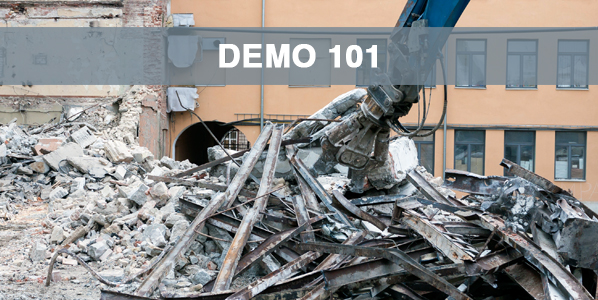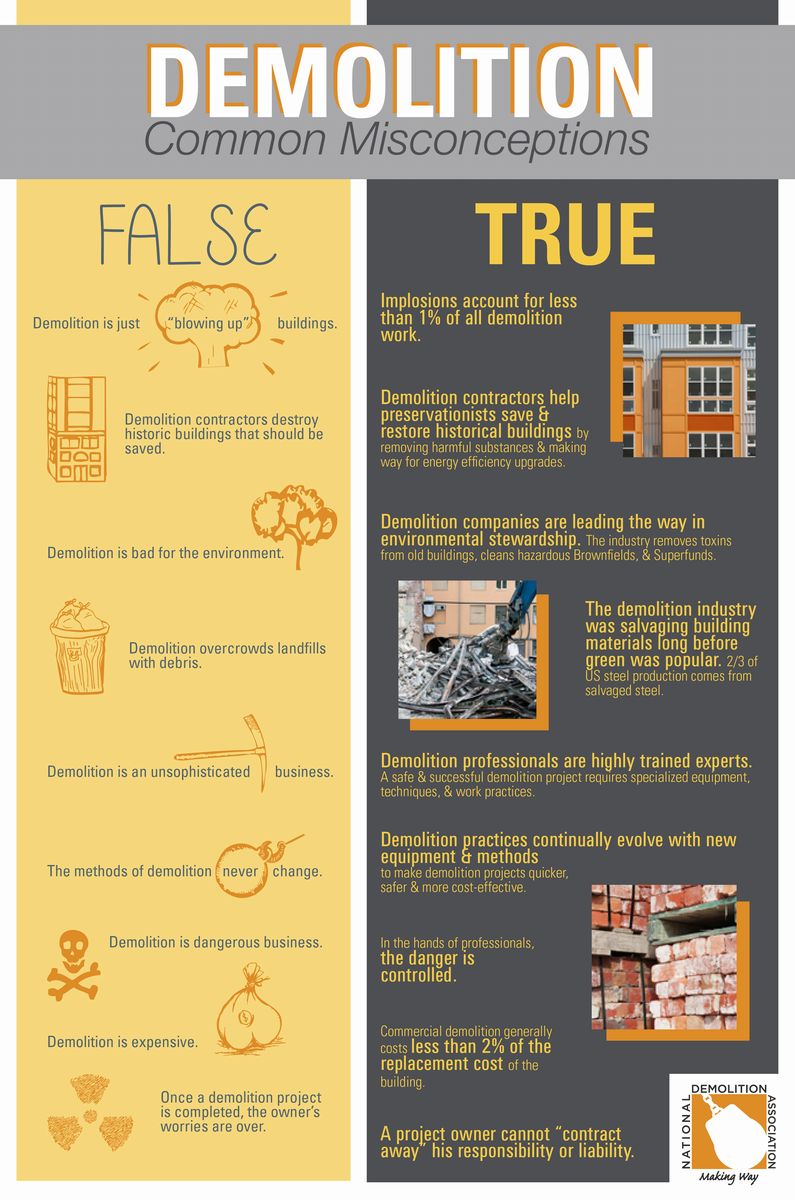Why is finding the right demolition contractor with the proper expertise so important? Find out why hiring the right demolition contractor is the best desicion you can make.
Hiring the Right Demolition Contractor

The Demolition Industry is continually making way for growth, revitalization and historic renovation around the world. Though demolition is an important part of the life of our cities and neighborhoods, most people don't know very much about how demolition works. That's okay because we love telling people about what we do. Email us anytime if you have questions!
Facts and Misconceptions

Click here to Download a printable copy of the Demolition Common Misconceptions.
Glossary of Terms
Demolition Process – the practices that make up the demolition, dismantlement, deconstruction, removal, recycling, salvage, reuse, transfer or disposal of buildings, structures and their components. The Demolition Process is how a building or structure is demolished or gutted in preparation for redevelopment or reuse.
Demolition Technology – the sophisticated equipment used to keep workers and the public safe and to protect the environment. Demolition Technology includes a host of specialized excavators, loaders, cranes, backhoes, skid steers, as well as various attachments such as wrecking balls, crushers, sheers, hammers, universal pulverizers and the like. It also includes protective equipment such as respiratory protection, filtration units, air monitors, water filtration systems, debris processing & recycling equipment, and various landfilling and disposal technologies.
Structural Dismantlement – the act of dismantling a building or structure into its most basic materials or parts.
Deconstruction – the act of dismantling a building or structure with the goal of generating the maximum amount of recyclable materials. Deconstruction is labor-intensive and typically requires a considerable amount of hand demolition.
Implosion – the use of explosives to bring about the gravitational collapse of a building or structure. Implosions account for less than one percent of all demolition.
Specialized Rigging – Task-specific lines, chains, pulleys and heavy equipment that are used to relocate, move, or salvage buildings, structures or their components.
C&D Recycling – “construction waste and demolition debris recycling” is the practice of salvaging, recycling and reusing materials from dismantled structures. Modern demolition professionals typically recycle more than 90% of a building.
Industrial Recovery – the act of salvaging, recycling, and reusing industrial components from plants, factories, and manufacturing facilities. Demolition professionals identify these valuable materials on project sites and market them to end-users and salvage firms.
Safe Work Practices – the safe guidelines followed by modern demolition professionals that protect their most important resource – a highly trained and skilled professional workforce. Safe Work Practices include occupational health & safety regulations, engineering recommendations, training guidelines, exposure limits for potentially hazardous substances, and environmental protocols to protect the public and safeguard the environment.